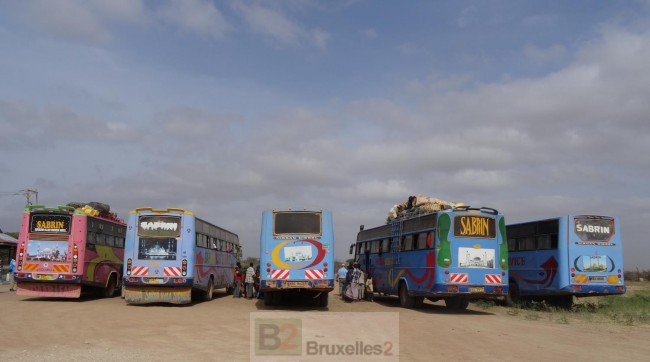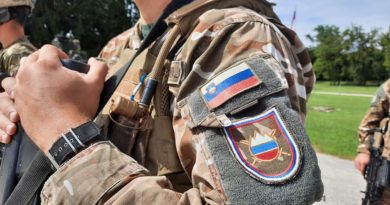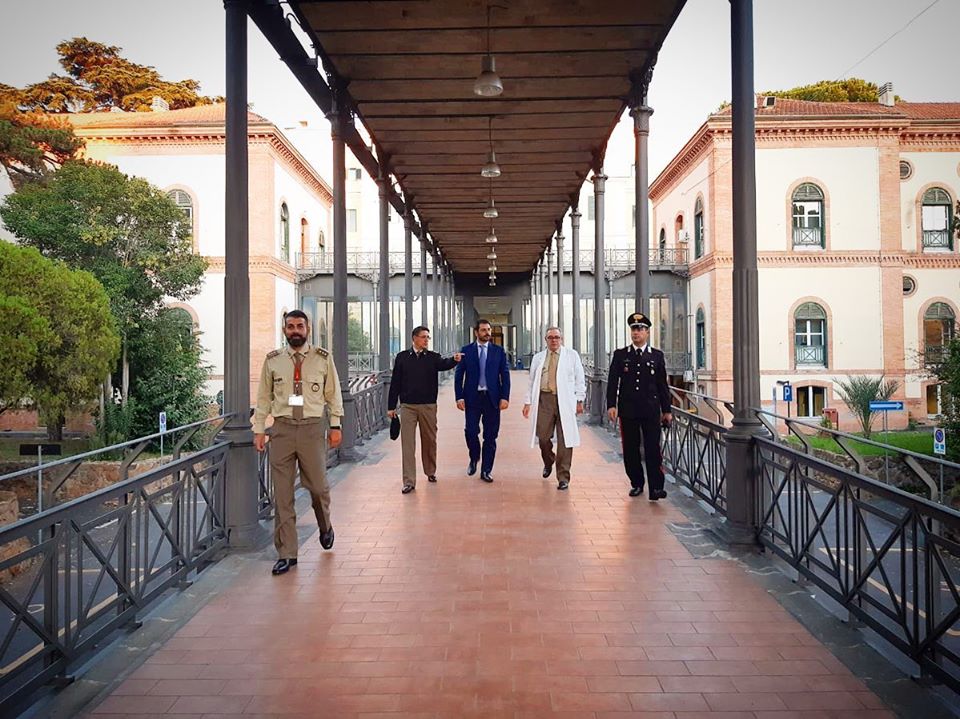Dadaab camp. Departing to return to Somalia
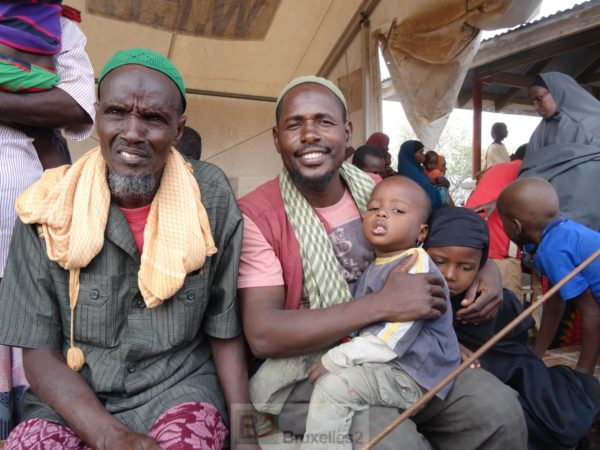
(BRUSSELS2) At the end of January 2016, 7211 Somali refugees in Kenya returned to Somalia under the repatriation agreement launched a year earlier
Most had arrived at the Dadaab refugee camp in 2011 or the following months, fleeing Somali chaos and famine. Some have arrived and left alone, like this young man, barely 21 years old, who explains that he prefers to find his family, because here, his plan to study and find work is impossible, the living conditions are too harsh. Five years he lived here, " nothing to be proud of he blurts out.
Mohamed Ali Mukhtar, 27, one of his 4 children on his knees, sees this return as a chance to rebuild a house. Mariama is an old woman, it is with her daughter and her mother that she will return to the country. She is from Mogadishu but has chosen Kismayo as her destination. She has received news from there that makes her think " that things have changed », that she will be able to resume a pastoral life there and better feed her elderly mother. They will leave the camp with the painful memory of the loss of another daughter, sixteen years of life here.
 Voluntary and accompanied returns
Voluntary and accompanied returns
The eyes are attentive, the wait calm under this tin roof under which the temperature begins to rise, the incessant wind. The European Commissioner for Humanitarian Aid, Christos Stylianides, visiting the Dadaab camp on January 20, 2016, exchanges a few words with some, worrying each time that they have chosen to leave, that no one has forced them . The growing noise of engines disturbs the light torpor. When the empty coaches arrive, the excitement gives way. The five colored buses are stormed by the refugees. Their luggage is already piled up on the roofs. In just a few minutes, everyone has found their place. The children are playing at the windows. For many of these children, this is the first time they will leave the camp, where some were born.
In limited areas
For this year, each week, 600 refugees could thus return to Somalia, either by coach or by plane, notably for Mogadishu (when conditions permit).
All will benefit from an emergency kit (blankets, solar lamp, etc.), a grant to pay for transport once they have crossed the Somali border and reach their destination where they will benefit from logistical support and financial support. the first months. UNHCR coordinates all of this, with the support of NGOs.
Kismayo, quite close to the Somali border, is the first destination chosen by returnees. This is one of the 9 areas available to them. In these districts, mainly located in southern Somalia, humanitarian aid and development aid are accessible and therefore meet the conditions for longer-term support to help them reintegrate in the areas they had leaked.
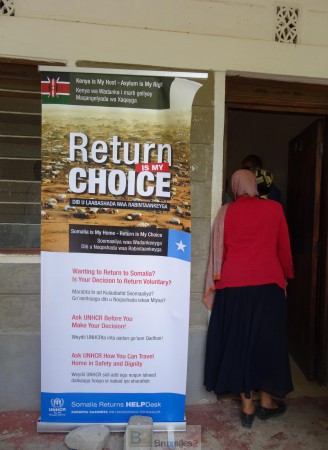
Tripartite agreement signed in 2013
It was in November 2013, on the proposal of the UNHCR, that a tripartite agreement was signed between the Kenyan and Somali governments and the UNHCR for the repatriation of voluntary Somali refugees. " I arrived in Nairobi the day of the Westgate attack (September 2013). I quickly understood that without a binding legal framework, we risked the expulsion of Somalis by the Kenyan State. explains Raouf Mazou, UNHCR representative in Kenya. Criticism from NGOs will be virulent, the political climate vis-à-vis refugees is indeed very harsh (see article on refugees in Kenya). Within the UNHCR itself, the agreement will be debated, considered by some to be premature, but it leads to a signature. The agreement commits the Kenyan government to continue to provide asylum to refugees, and the Somali state to facilitate the return of refugees. UNHCR organizes these volunteer returns. In the Dadaab camp, a reception office provides information to refugees and accompanies those who decide to take the plunge.
Weakened in 2015
From the start, the UNHCR did not, as in other countries, really promote this program among the refugees. Satisfied with accompanying those who are interested. This is justified by the still precarious and uncertain conditions of the evolution of the situation in Somalia. Only three areas are identified as suitable for the return of refugees. For the first few months, the repatriation program therefore did not brew crowds.
The agreement also nearly collapsed when the Kenyan government launched its policy of confinement of Somalis in the spring of 2015, following the attack on the Garrissa campus. The government is pressing for the number of departures to accelerate. Even threatens to close the camp (see article on refugees in Kenya).
Supporting development in Somalia
The repatriation program started in December 2014. The objective, for the first six months of the pilot phase, was to support the return of 10 Somalis to three areas, then identified as accessible and where the teams could therefore take the UNHCR relay. Since June 000, six new areas (including Mogadishu), i.e. a total of nine, have been offered to refugees interested in returning. This multiplies the possibilities.
In one year, nearly 18 refugees came to inquire. Barely more than one in three made it to the end. More than insecurity, it is the absence of basic services (social, educational) that slows down these returns. " The conditions of origin are such that people can hardly return to Somalia says Catherine Hamon Sharpe of UNHCR.
Creating and supporting Somalia to create these basic services was the challenge of a donors' conference in Brussels in October 2015, where the European Union for its part announced the granting of aid of 60 million euros for Somali refugees in Somalia and Kenya. 50 million euros to be used for the " sustainable and sustainable reintegration in Somalia of refugees and displaced persons, for example by increasing access to basic services, improving livelihoods and reducing vulnerability in areas of return and departure ».
So many isolated departures
Other refugees returned to Somalia on their own. Their number would be equivalent to the number of refugees repatriated under this agreement. Since this plan was launched, on the other hand, some come back, to be able to benefit from it to start again. An ubiquitous situation recognizes Raouf Mazou, UNHCR representative in Kenya, but he understands. " There's no reason we can't help them “, he believes, cutting short the debate on the risk of air inrush.
Overall, many of those who left had only been there for 4 years. Until today, none of these returnees have returned, assures the UNHCR. A sign, according to the organization, that their decisions were well thought out.
(Emmanuelle Stroesser)
